Industries
Customized HMI solutions for medical technology — reliable, precise, durable
Control panels, individual membrane keypads & touch displays especially for medical requirements
Why standard HMIs are often not enough in medical technology
Medical technology places specific requirements on the components used to ensure optimum functionality and patient safety. Standard solutions quickly reach their limits here. With our HMI solutions, we meet all the necessary requirements. Benefit from proven standard materials and solutions so that you can concentrate on approval and your medical application.
Here you will find some of the most important requirements for HMIs in medical technology:
Closed surfaces
Medical devices have special requirements in terms of reliability and the protection of users and patients. In order to avoid malfunctions due to the ingress of solids or liquids, medical devices are normally designed with closed surfaces or, in the case of medical devices, at least the IP protection class 65 acc. ISO EN 60529 recommended. This ensures that the devices can be operated reliably and safely at all times, both in the demanding clinical routine and during regular cleaning.
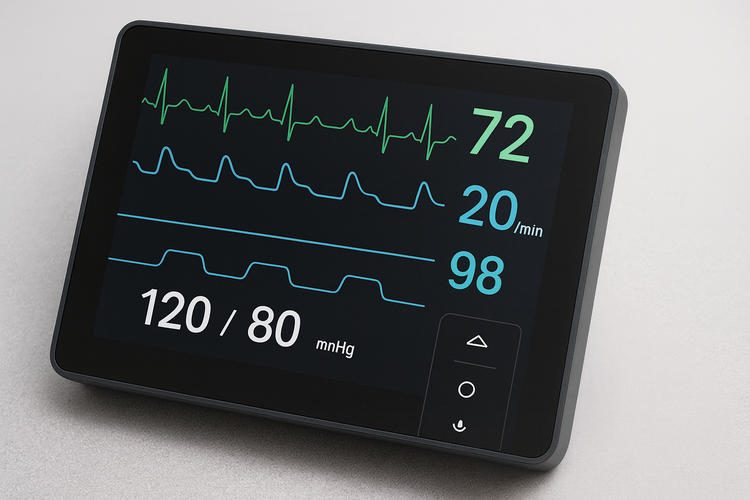
Usability with gloves
For reasons of hygiene, the use of gloves is common practice in all medical areas. The latex disposable gloves frequently used in medical technology are no problem for any of our input systems and can be used without any problems. However, thicker gloves made of various materials such as cotton or nylon can also be considered if required. Our systems are specially designed to ensure high operating accuracy regardless of the type of glove.
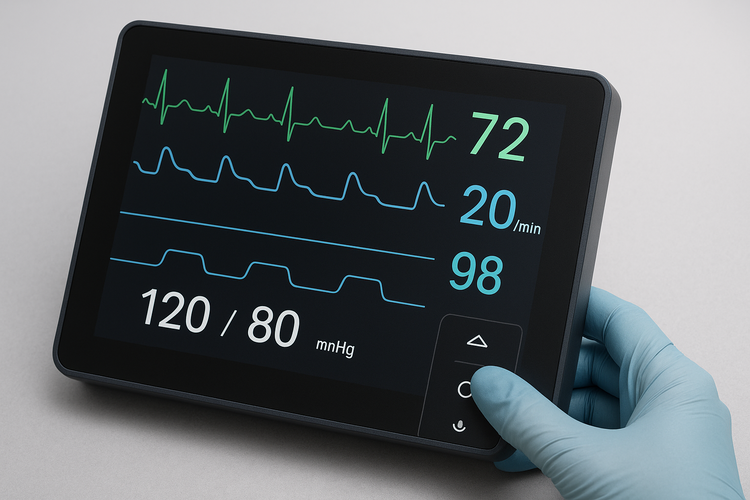
Resistance to disinfectants and cleaning agents
Frequent cleaning and disinfection is a permanent challenge for the materials used. The materials we use have proven themselves in practice over many years and therefore represent a safe basis(DIN 42115). Sometimes, however, applications require special cleaning agents (e.g. highly alkaline or acidic). We are happy to support you with data on various resistances and suggest suitable solutions.
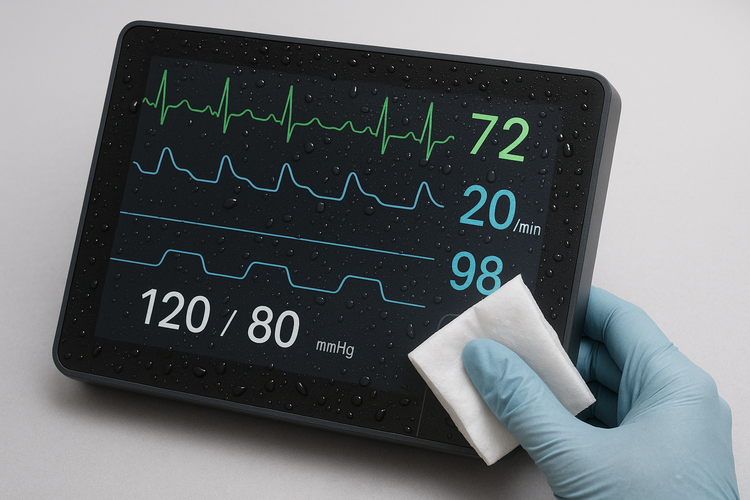
Protection against liquids
Thorough cleaning and disinfection of devices is more important in the medical sector and therefore takes place more frequently than in many other applications. Systems in medical technology should therefore be completely resistant to the penetration of cleaning agents, disinfectants and medicines, steam or water. For medical devices, at least the IP protection class 65 acc. ISO EN 60529 recommended. This ensures the safety of patients and users as well as the long-term functionality of the devices.
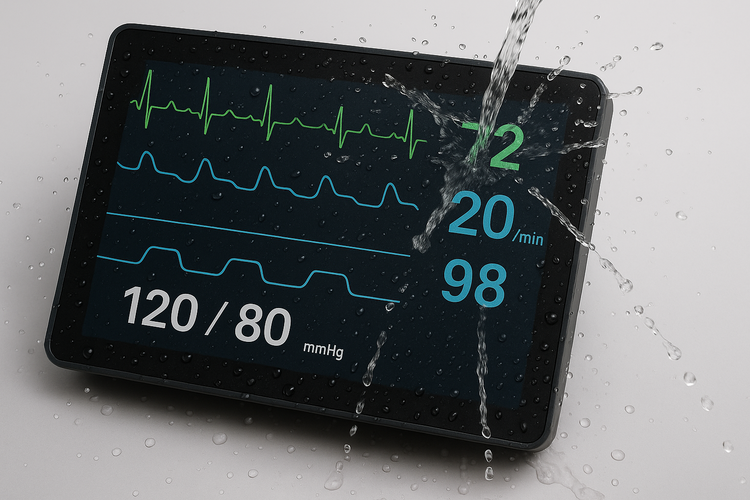
Optimized readability
Depending on the application, the readability or accuracy of the representation on the display can be a very sensitive issue. The choice of the right components, the right optical specification and the type of connection (e.g. optical bonding or air-gap bonding) must be selected with a view to the target. Neither “overshooting the target” nor “just doing it” are optimal in terms of price, quality and performance. A careful balance of these factors is crucial to ensure a reliable and long-lasting solution.
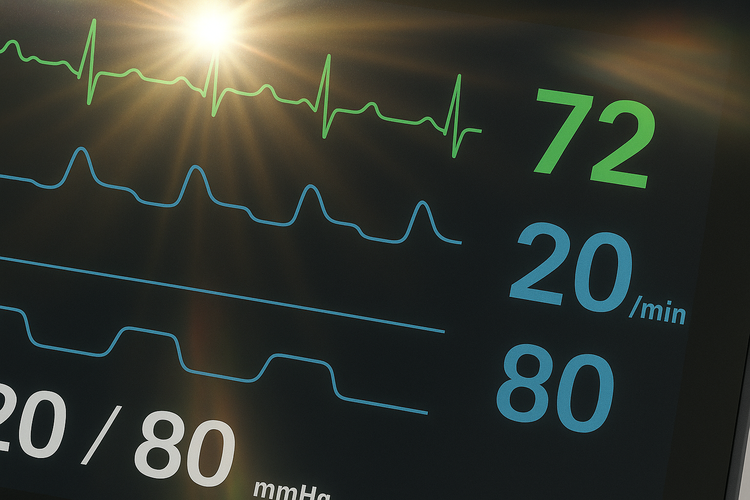
Electromagnetic compatibility — EMC
To ensure patient safety, IEC 60601–1‑2 specifies increased requirements for the EMC behavior of medical devices. This affects factors such as interference and radiation, conducted coupling, etc. We can provide your operating system with additional
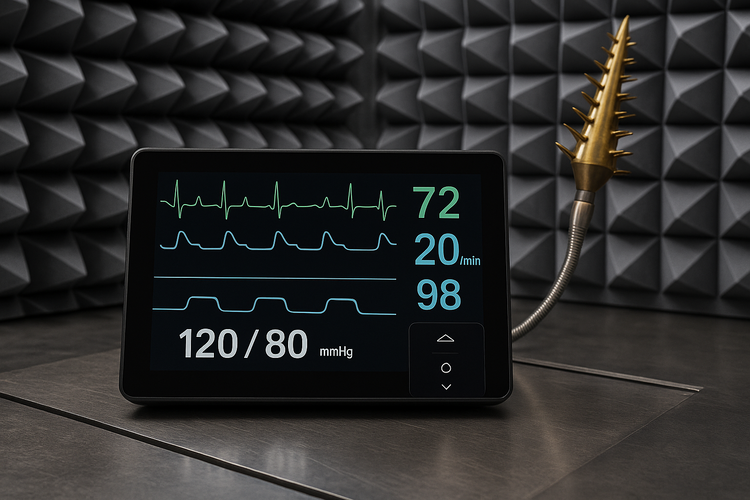
HMIs in medical technology are characterized by a wide range of applications and diverse uses. We would like to highlight the following areas as examples:
Diagnostic systems:
High-quality displays and cover glasses that enable a clear and distortion-free presentation of diagnostic data.
Manual control units:
Membrane keypads and front panels with or without lighting, in plastic or aluminum housings.
Therapy and surgical devices:
Robust and hygienic user interfaces that also function reliably in sterile environments.
Medical IT systems:
Control elements and HMI solutions for hospital information systems that promote efficiency and user-friendliness.
Our reference customers include well-known companies and institutions from the medical technology sector who rely on our solutions and use them successfully in their applications:
Do you have any questions? We have the answers! In our FAQs you will find an overview of the most frequently asked questions about HMIs in medical technology. If you cannot find the right answer here, please do not hesitate to contact us directly — we will be happy to help you.
General questions

Why EP Electronic Print?
At EP Electronic Print, we rely on state-of-the-art components and technologies to develop innovative and customized HMI solutions.
Do you have any questions or would you like to find out more about our HMI solutions?
Our team will be happy to advise you and work with you to find the best solution for your project. Use our contact form or call us directly — we look forward to hearing from you!
We are here for you
Telefon: +49 (0)8142 /420896–20
E‑Mail: projekte@ep-electronicprint.de Allgemeine Anfragen:
Telefon: +49 (0)8142 /420896–0
E‑Mail: info@ep-electronicprint.de EP Electronic Print GmbH
Am Weidegrund 8 & 10
82194 Gröbenzell








